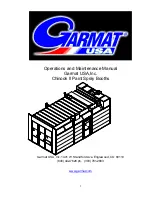
VersaMax, SpectraMax 340PC384, 190, Plus 384 Microplate Readers User Guide
24
0112-0126 B
Read Types
The instrument supports the following read types:
Endpoint Read Type
In an endpoint read type, a read of each plate well is taken in the center of each well, at a
single wavelength or at multiple wavelengths. Raw data values are reported as optical
density (OD), % transmittance (%T), or relative fluorescence units (RFU), or relative
luminescence units (RLU).
Kinetic Read Type
In a kinetic read type, the instrument collects data over time with multiple readings taken in
the center of each well at regular intervals. To achieve the shortest possible interval for
kinetic reads, choose wavelengths in ascending order.
The software can do the following calculations based on raw data: VMax, VMax per Sec, Time
to VMax, and Onset Time. Kinetic reads can be single wavelength or multiple wavelength
readings.
The kinetic read type can collect data points in time intervals of seconds, minutes, or hours
(up to 99 hours).
Kinetic analysis has many advantages to determine the relative activity of an enzyme in
different types of plate assays, including ELISAs and the purification and characterization of
enzymes and enzyme conjugates. Kinetic analysis is capable of providing improved dynamic
range, precision, and sensitivity relative to endpoint analysis.
Spectrum Read Type
A spectrum read measures optical density (OD), %Transmittance (%T), relative fluorescence
units (RFU), or relative luminescence units (RLU) across a spectrum of wavelengths.
Spectrum reads are made using the scanning monochromators of the instrument.
SpectraMax Plus 384 - Wavelengths from 190 nm to 1000 nm
SpectraMax 190 - Wavelengths from 190 nm to 850 nm
SpectraMax 340PC384 - Wavelengths 340 nm to 840 nm
VersaMax - Not applicable
















































